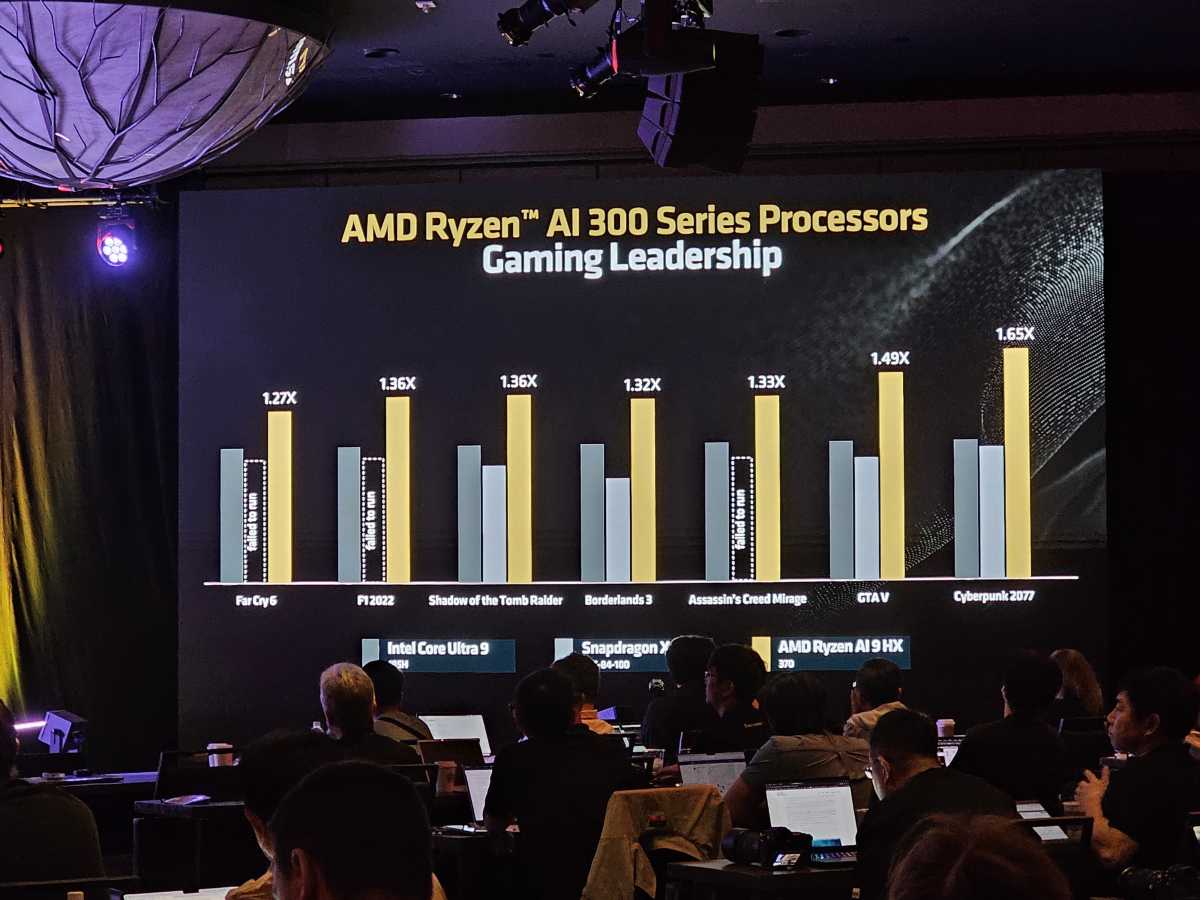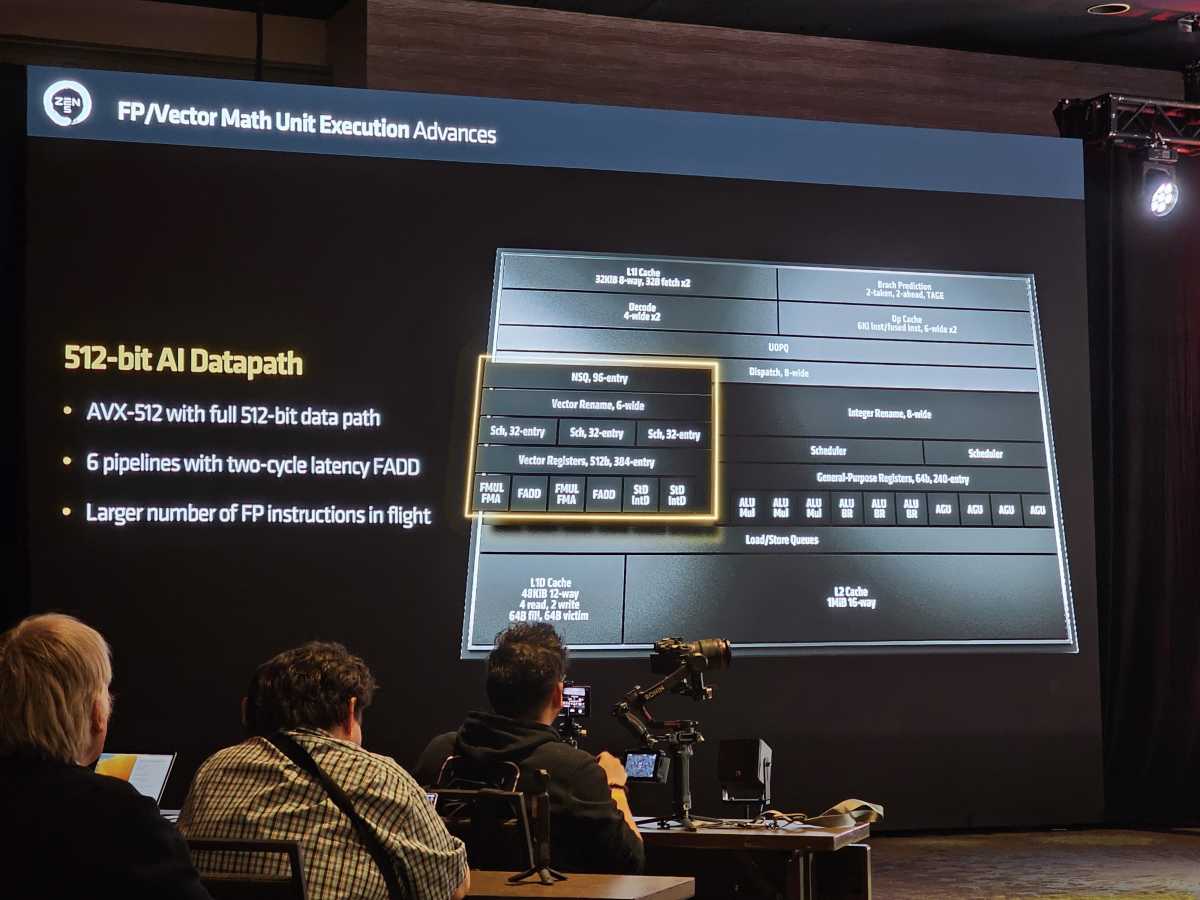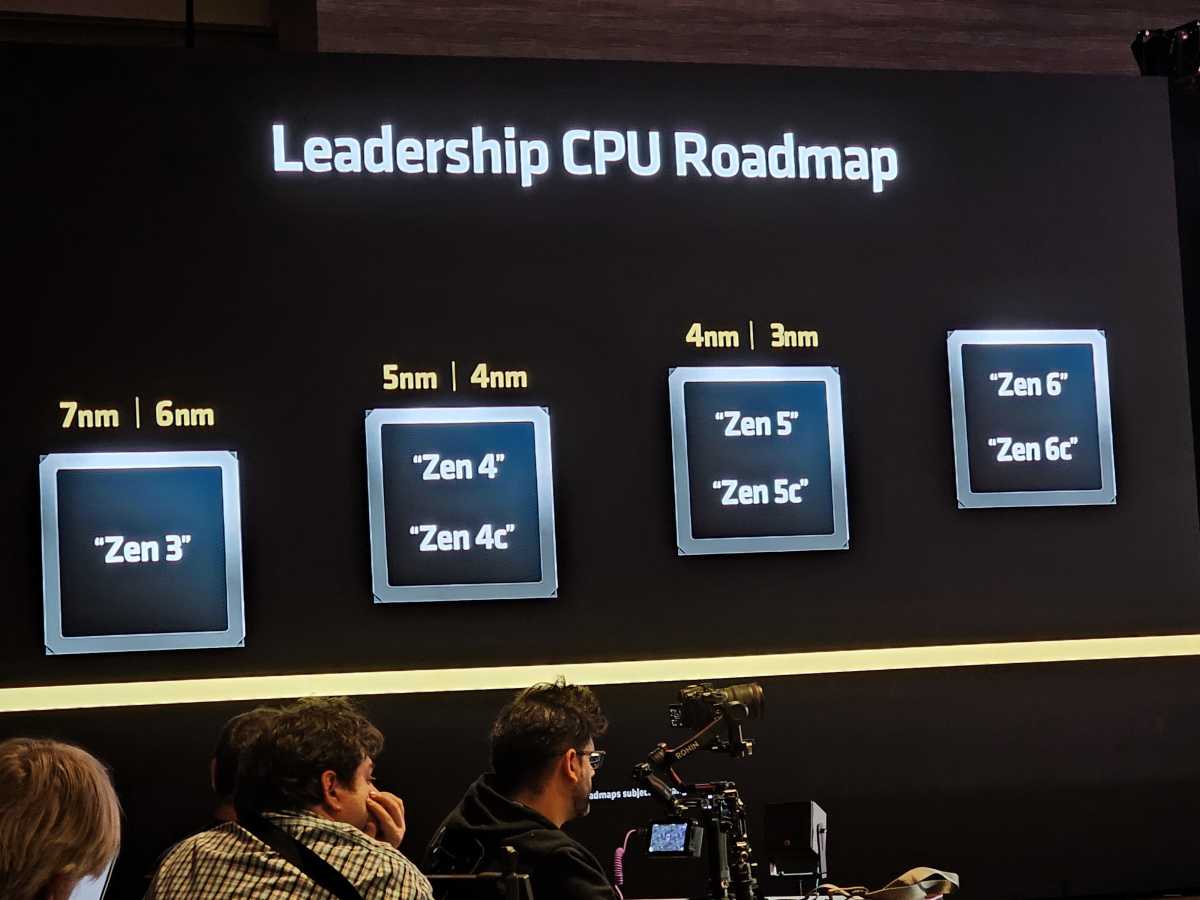The PC industry is currently obsessed with power efficiency, long battery life, and AI. But who’s going to stand up for the people who want raw performance and don’t care about anything else?
That performance advocate could be you, AMD. You’ve got what it takes. So dig out that bomber jacket, put on those aviator shades, and lean in. Be the rebel chip vendor we want you to be.
This isn’t a story about AMD executives smashing a server with a sledgehammer, or spray-painting graffiti all over Intel’s headquarters. In fact, at its recent Tech Day, AMD spent two days with reporters talking over PowerPoint presentations about IPC uplift, data paths, and the time to first token. But the subtext was how well positioned both the Ryzen 9000 and the Ryzen AI 300 are to take over the PC market.
There were two clear messages from AMD: First, AMD’s Ryzen 9000 (Granite Ridge) and its Ryzen AI 300 (Strix Point) are nearly here — the latter will ship July 28, according to retailers and manufacturers. Intel’s Lunar Lake is decidedly not so imminent, giving AMD an advantage.
Second, AMD’s chips will deliver performance that is significantly above what Intel will offer, and without the compatibility issues that have hindered Windows on Arm laptops from Qualcomm’s Snapdragon X Elite. Unfortunately, we still don’t know the prices of the Ryzen 9000 processors, even though those chips will ship on July 31, AMD said.
Building Ryzen for speed

Mark Hachman / IDG
Mark Hachman / IDG
<div class="scrim" style="background-color: #fff" aria-hidden="true"></div>
</div></figure><p class="imageCredit">Mark Hachman / IDG</p></div>AMD executives began with the abstract — the Zen processor architecture itself — then drilled down to the two chips themselves, and from there on to the tools that users can take advantage of to tweak performance further.
Both the Ryzen 9000 and AI 300 are based upon AMD’s latest Zen 5 architecture, the fifth iteration since AMD originally launched Zen in 2017. Mark Papermaster, AMD’s chief technical officer, said that performance is the overarching goal, with the general Zen 5 architecture achieving on average 16 percent more IPC (instructions per clock) performance than its predecessor, the short-lived “Hawk Point” CPU inside December’s Ryzen 8000 chip. He also confirmed that AMD does plan an eventual Zen 5c core, as expected but not previously confirmed.
“What we said at the time [in 2017] was that…we’re going to come out, consistently, with bringing more performance to x86 CPUs,” Papermaster said. “We’re going to simply provide outright leadership — that was the goal that we set and that’s what we’ve done. And what I can tell you is that there will be no letups, and Zen 5 will not disappoint you with the kind of performance improvements that we’ve brought and we won’t let up going forward. We’re doubling down on Zen 5 and what you’re going to see is that it really represents a huge leap forward. And in fact, it’s going to be a pedestal that we’re going to build upon the next several generations.”

Mark Hachman / IDG
<div class="lightbox-image-container foundry-lightbox"><div class="extendedBlock-wrapper block-coreImage undefined"><figure class="wp-block-image size-large enlarged-image"><img decoding="async" data-wp-bind--src="selectors.core.image.enlargedImgSrc" data-wp-style--object-fit="selectors.core.image.lightboxObjectFit" src="" alt="AMD Zen 5 Strix Point datapath" class="wp-image-2395444" width="1200" height="900" loading="lazy" /></figure><p class="imageCredit">Mark Hachman / IDG</p></div> </div></figure><p class="imageCredit">Mark Hachman / IDG</p></div>Papermaster supplied some internal details of the Zen 5 architecture, such as a 512-bit datapath for processing AVX-512 instructions. The integrated RDNA 3.5 graphics engine — which AMD improved after a collaboration with Samsung in the mobile space — delivers 32 percent faster performance in 3DMark’s Time Spy benchmark than the Ryzen 8000. The chip also includes what Papermaster called a “breakthrough” improvement of its math acceleration unit, which delivers a 32 percent improvement in machine learning for AI applications.
Zen 5 will use both 4nm (Strix Point) and 3nm technology, Papermaster said, leaving open the question of when Zen 6 will ship and on what process technology.

Mark Hachman / IDG
<div class="lightbox-image-container foundry-lightbox"><div class="extendedBlock-wrapper block-coreImage undefined"><figure class="wp-block-image size-large enlarged-image"><img decoding="async" data-wp-bind--src="selectors.core.image.enlargedImgSrc" data-wp-style--object-fit="selectors.core.image.lightboxObjectFit" src="" alt="AMD Zen roadmap" class="wp-image-2395432" width="1200" height="900" loading="lazy" /><figcaption class="wp-element-caption">AMD’s Zen roadmap is a little fuzzy, but there.</figcaption></figure><p class="imageCredit">Mark Hachman / IDG</p></div> </div></figure><p class="imageCredit">Mark Hachman / IDG</p></div>AMD’s Ryzen AI 300, meanwhile includes two CCD core clusters and “enhanced boost sensitivity” that apparently will allow them to transition quickly into a boost state, increasing performance. Papermaster also reminded the audience that the Ryzen 9700X is on average 12 percent faster in gaming than the cache-laden 105W gaming monster Ryzen 5800X3D, which debuted just two years ago in 2022.
Joe Macri, AMD’s chief tec
Login to add comment
Other posts in this group

Streaming images can really pop when the contrast-boosting Dolby Visi


Replacing your laptop or desktop PC with a mini PC is a pretty smart



If your laptop’s anything like mine, then it lacks many of the ports

